Smoked Pulled Pork
This post may contain affiliate links.
Make incredibly tender, juicy and flavorful Smoked Pulled Pork with this easy recipe. Combine the perfect rub with an overnight brine, and a low and slow smoke, to create melt in your mouth Texas-style pulled pork!
Pair the smoked pork shoulder with my Dad’s Famous BBQ Baked Beans and Smoked Mac and Cheese for a complete meal!
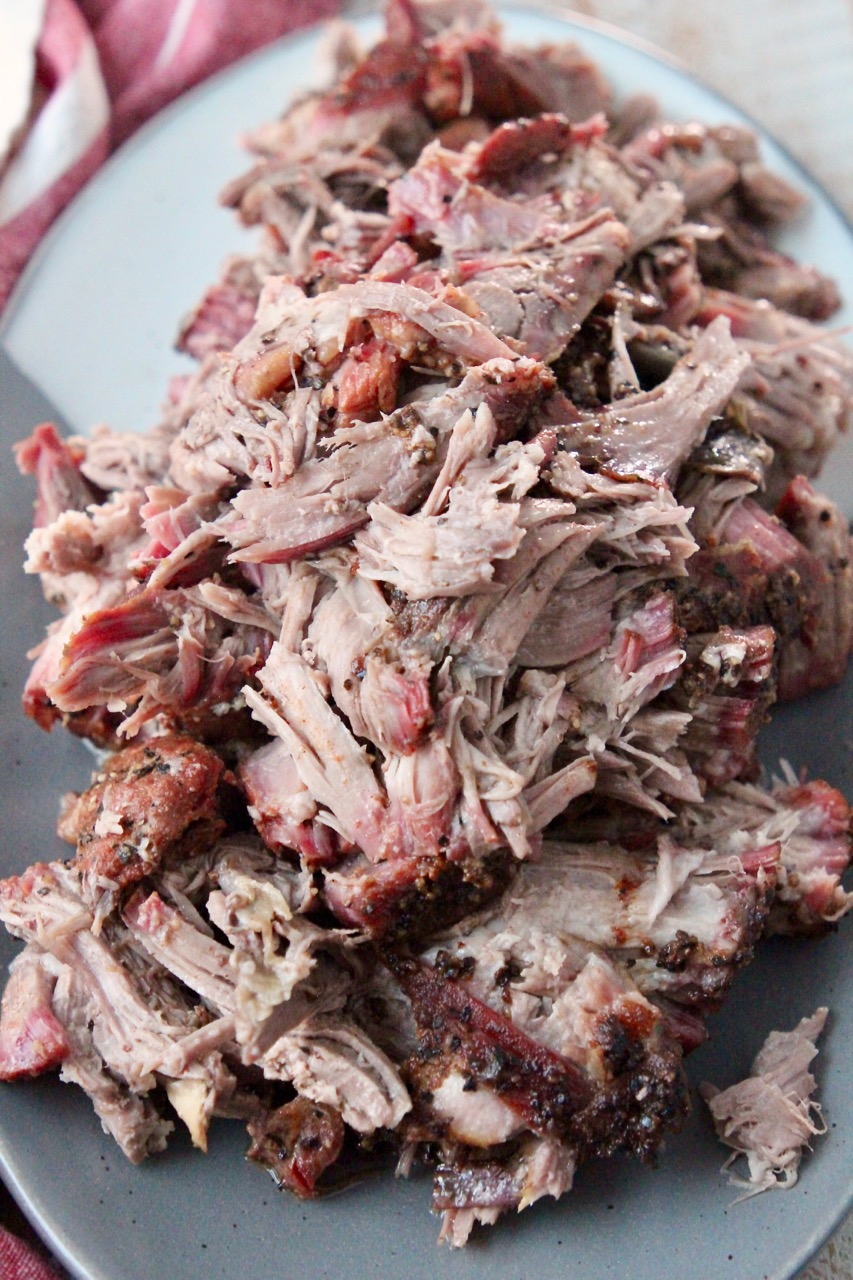
Table of contents
Growing up in Oklahoma, beef was the name of the game! My families Smoked Brisket recipe has been passed down for 3 generations and continues to be one of the most popular recipes on the blog.
Since I got my first Traeger grill in 2017, I’ve been on a mission to make a Smoked Pulled Pork recipe that was on par with the amazingness of my families smoked brisket.
I spent years researching methods from award winning pitmasters, watching videos from Texas BBQ king Aaron Franklin and testing out recipes on the smoker. Now I’m excited to share this tested and perfected Smoked Pork Butt recipe with you!
Don’t be intimidated to smoke your own pulled pork at home, most of the time is spent hands-off, just letting the smoker do it’s thing. We love to throw a pork butt and brisket on the smoker in the morning, then hang out with friends all day, having drinks and playing games. At the end of the day, everyone is rewarded with an incredible meal!
After checking out all of my tips and tricks in this post, you’ll be armed and ready to make the best smoked pork shoulder of your life!!
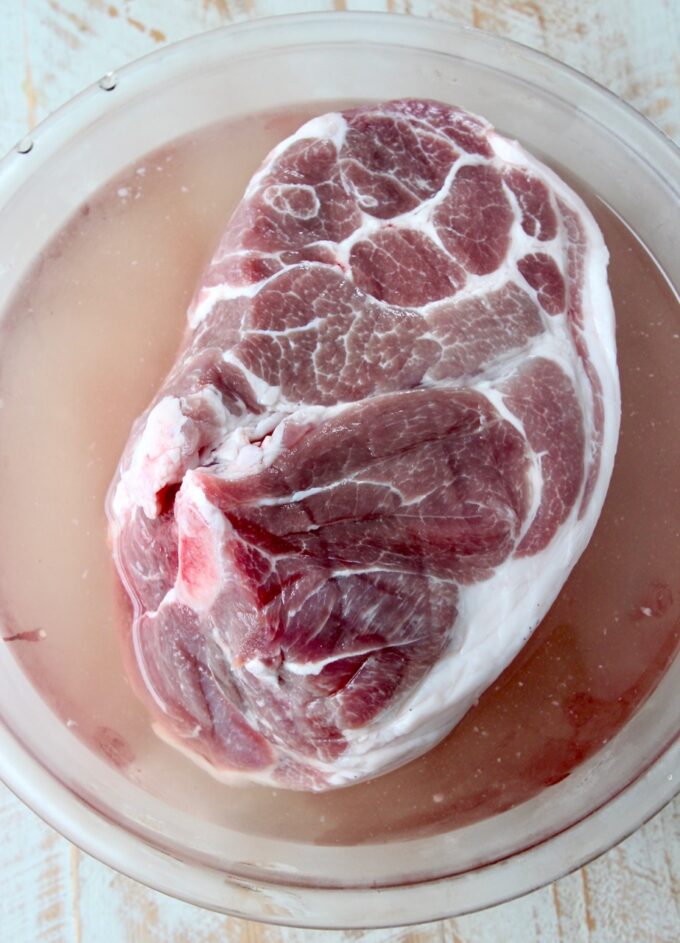
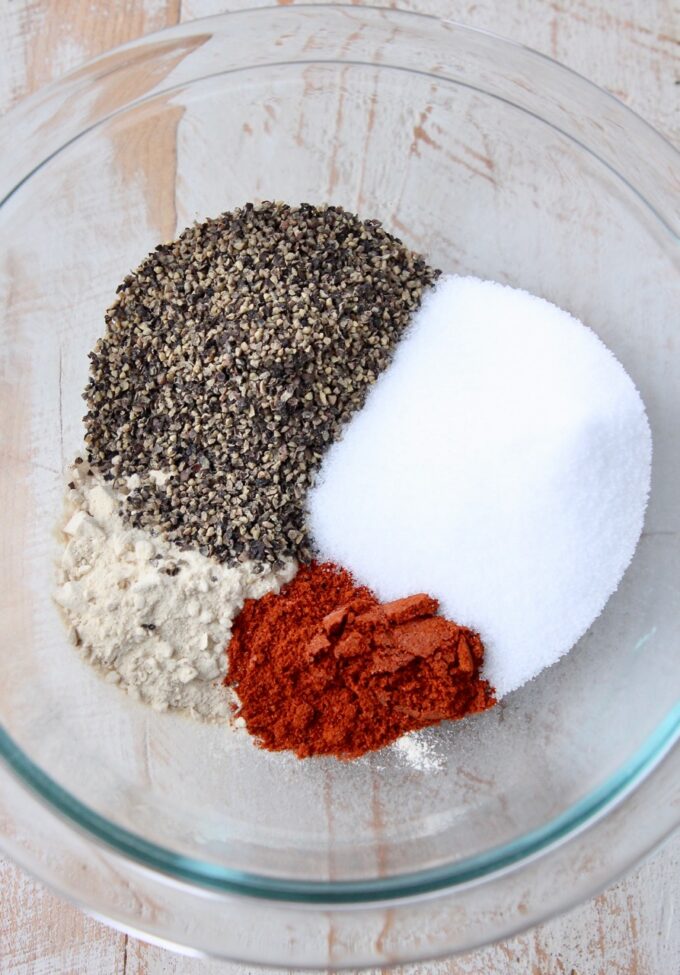
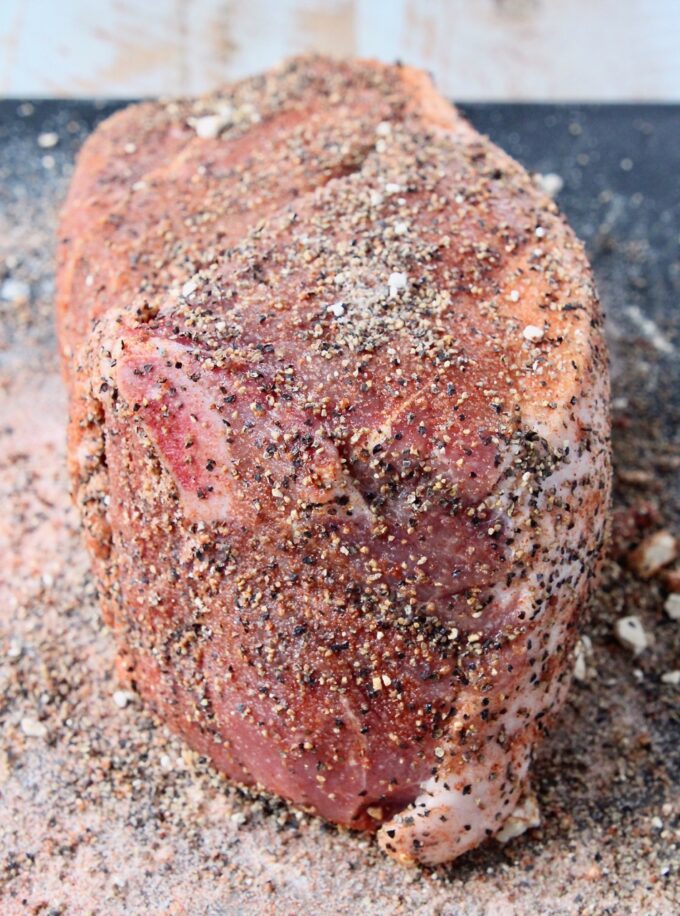
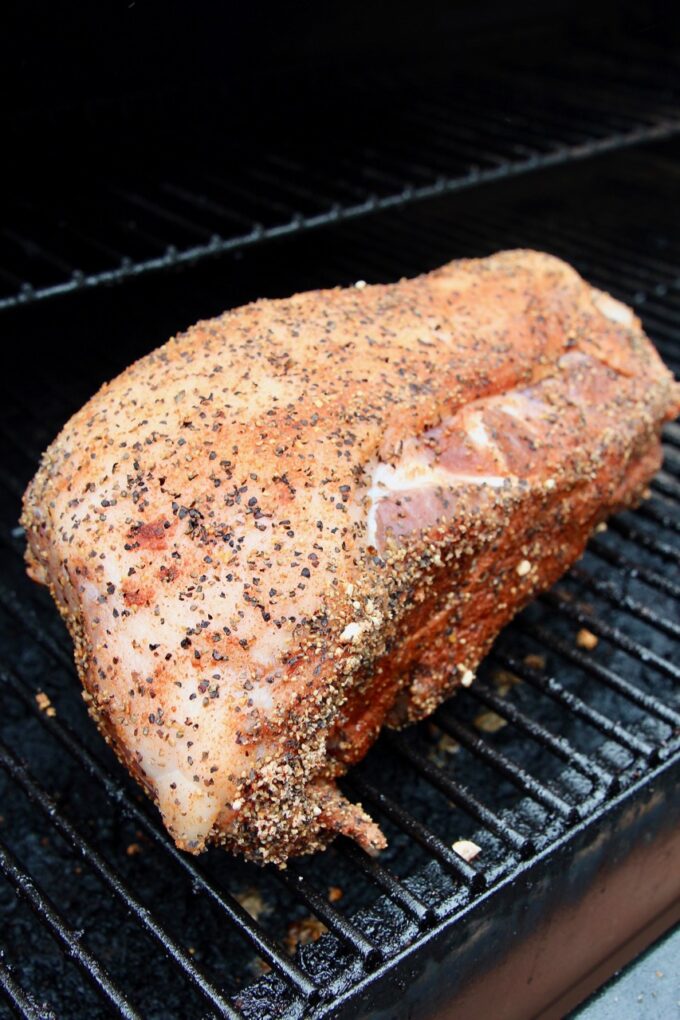
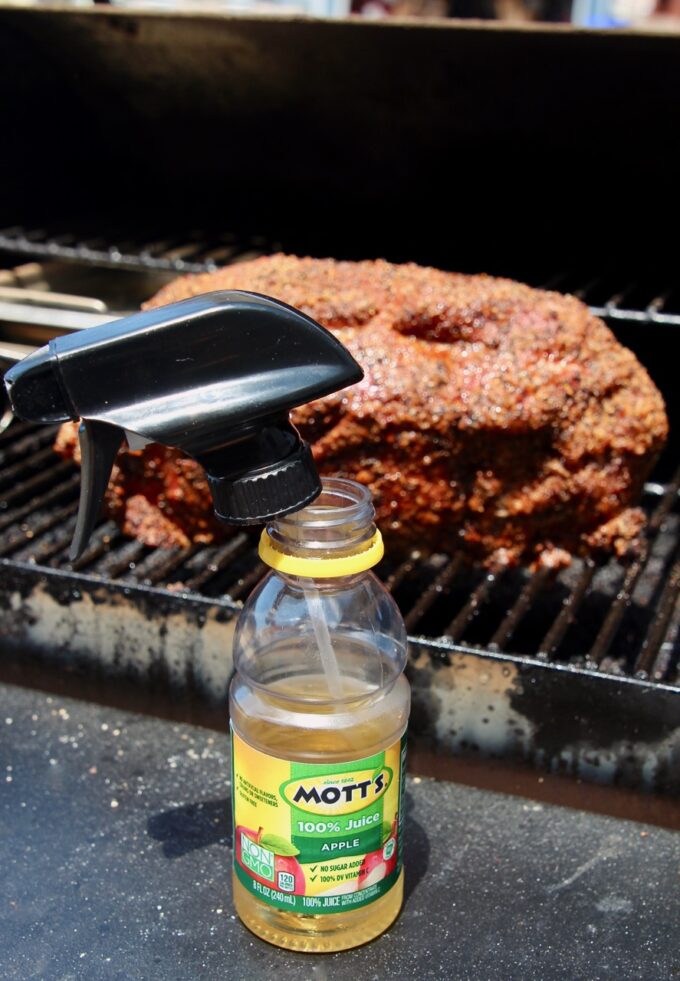
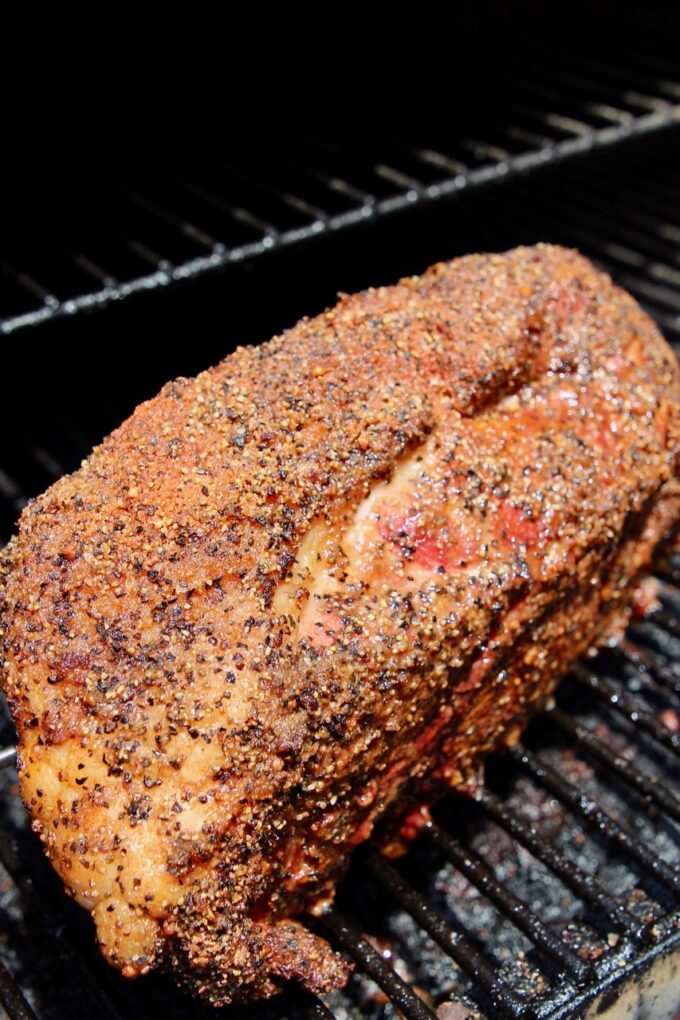
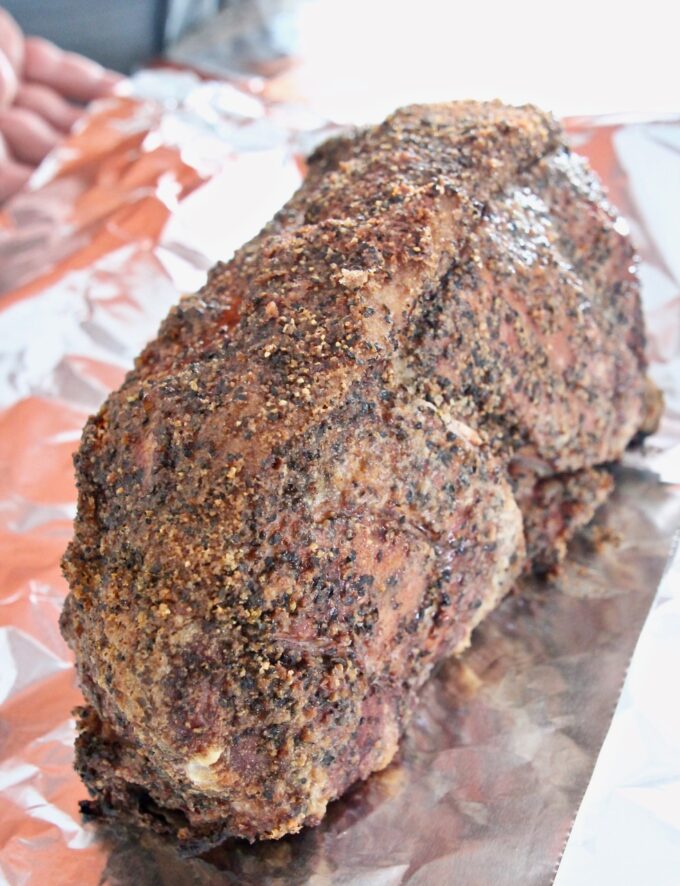
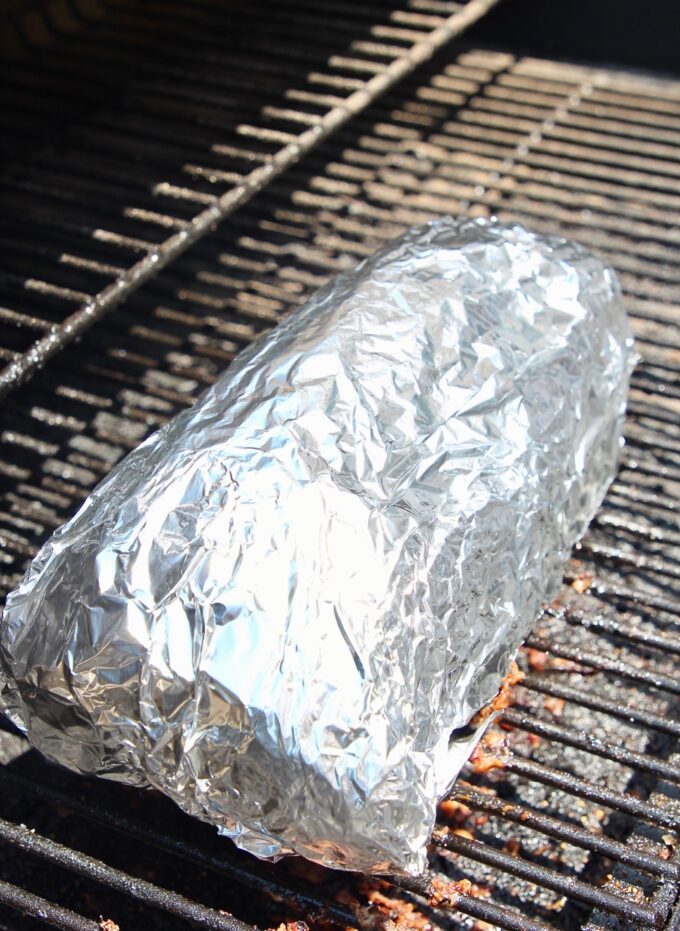
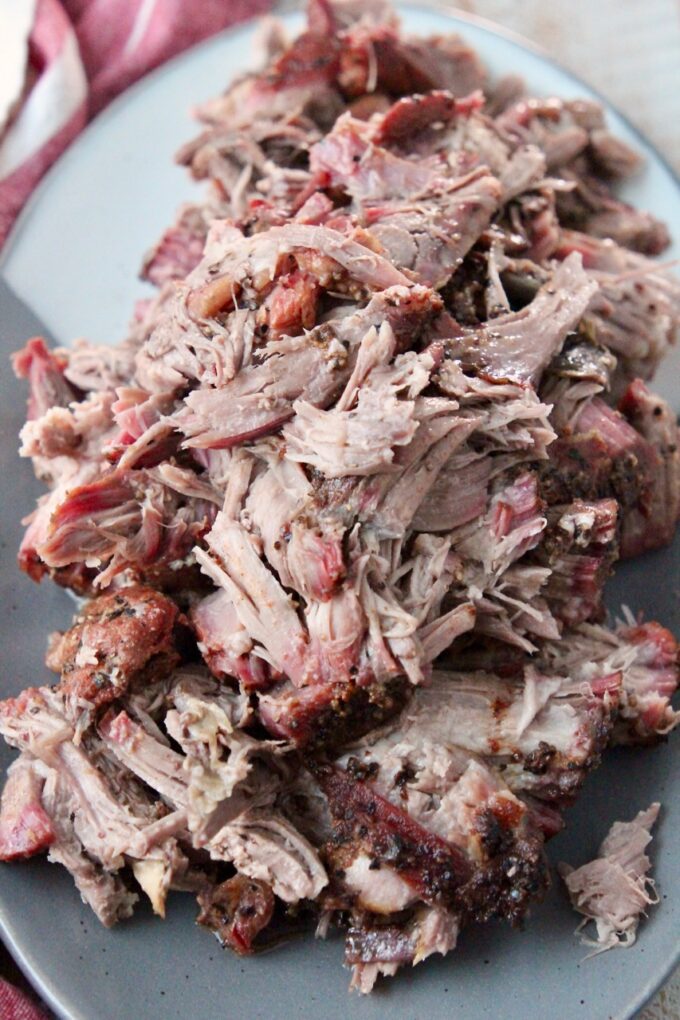
Step by step instructions
- Brine the pork butt. In a small pot on the stove, bring 16 ounces of water to a boil. Once the water is boiling, add salt and sugar. Stir for 2-3 minutes, or until the sugar and salt are dissolved into the water. Set aside to cool for 10-15 minutes, then pour over the pork butt in a large bowl or bag. Add an additional 16 ounces of water, or enough to cover the pork butt. Place a piece of plastic wrap over the bowl and place in the refrigerator for 8-10 hours, or overnight.
- Make the dry rub. Combine black pepper, salt, paprika, garlic powder and onion powder in a small bowl.
- Rub the pork shoulder. Rub the pork with olive oil. This will help the rub stick to the pork. Sprinkle the prepared dry rub onto the pork butt and rub it in, making sure to cover the entire outside of the pork with the rub.
- Smoke the pork shoulder. Preheat the smoker to 275 degrees Fahrenheit. Place a water pan in the smoker filled with water. This will help keep the pork moist throughout the cooking process. Place the seasoned pork butt fat side up on the smoker. Smoke until the internal temperature reaches 160 degrees Fahrenheit, about 4-5 hours.
- Spritz with apple juice. While the pork is on the smoker, spritz the outside of the pork shoulder approximately every 30 minutes with apple juice. This helps keep the pork juicy.
- Remove the pork. Pull the pork from the smoker when it reaches an internal temperature of 160 degrees Fahrenheit and the fat begins to split on top of the pork.
- Wrap the pork. Use grill-safe heavy duty foil, or food grade butcher paper to wrap the pork shoulder, then place it back on the smoker until it reaches 203 degrees Fahrenheit, about 4-5 hours. This is called the Texas Crutch Method. Learn more on that below.
- Rest and pull the pork. Once the internal temperature reaches 203 degrees, remove the pork from the smoker, keep it wrapped and let it rest for 30-60 minutes. Remove the foil or butcher paper from the pork, use your hands with gloves, meat claws or two forks to shred the pork.
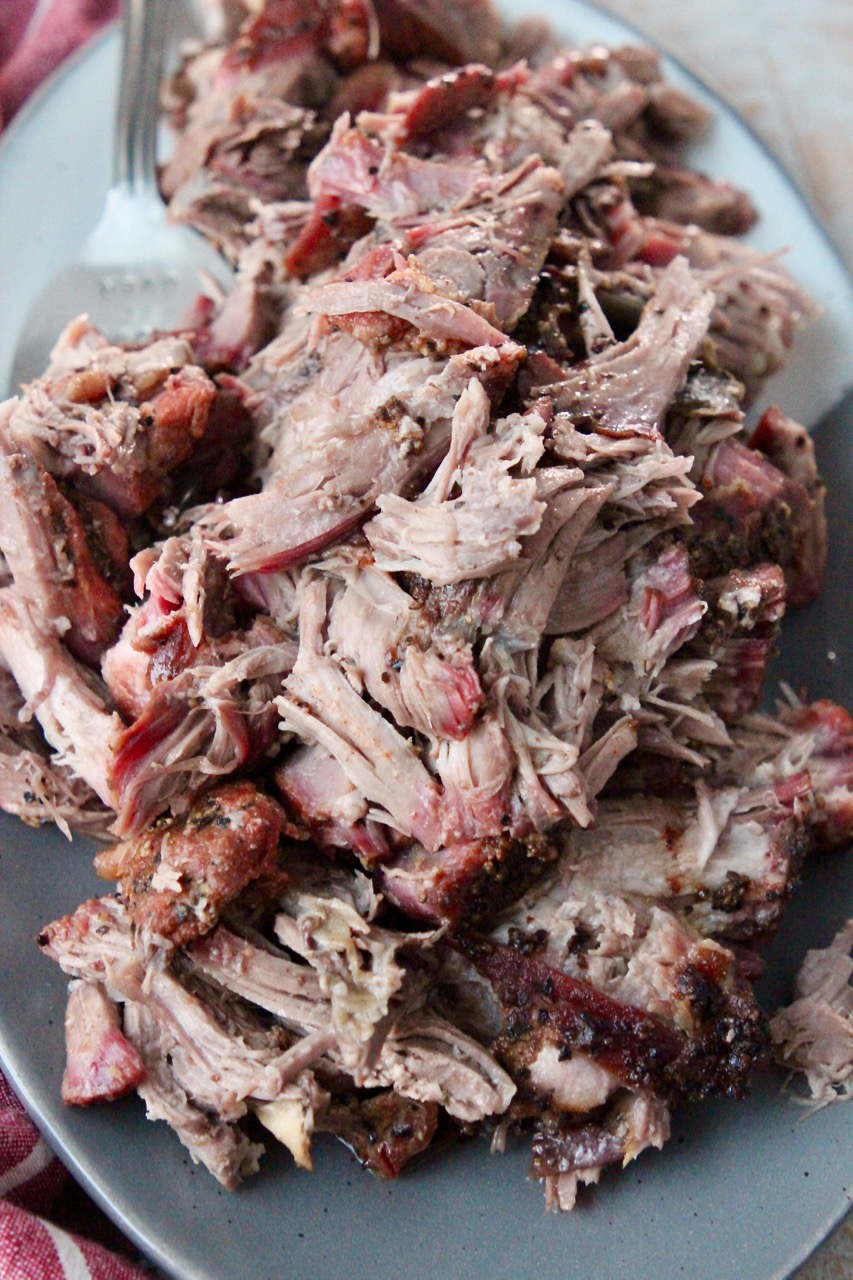
What’s the difference between a pork shoulder and pork butt?
The name “pork butt” is confusing because this cut of pork does not actually come from the rear end of the pig. Actually a pork butt and pork shoulder both come from the shoulder of the pig. They can be used interchangeably in this recipe, but I recommend a bone-in pork butt whenever possible.
A pork butt has more fat and marbling than a pork shoulder, which means more fat will cook down into the meat, making it juicier and more flavorful. A pork shoulder might also be sold with the skin on, which you don’t want for this recipe.
When picking out a pork shoulder or butt at the grocery store, make sure the fat cap is intact, but there is no skin on the pork. You can purchase a bone-in or boneless pork butt, but I highly recommend buying a bone-in pork butt whenever possible.
When shopping for your pork, note that a pork butt may also be called a “boston butt” and a pork shoulder may be called a “picnic shoulder” or “picnic roast”.
What kind of pellets or wood should I use?
For this pulled pork recipe, I recommend a mild to medium flavored smoke, preferably from a sweet tree. Any of the following will work:
- Apple – this is my personal preference. It pairs perfectly with the flavor of the pork.
- Maple
- Peach
- Cherry
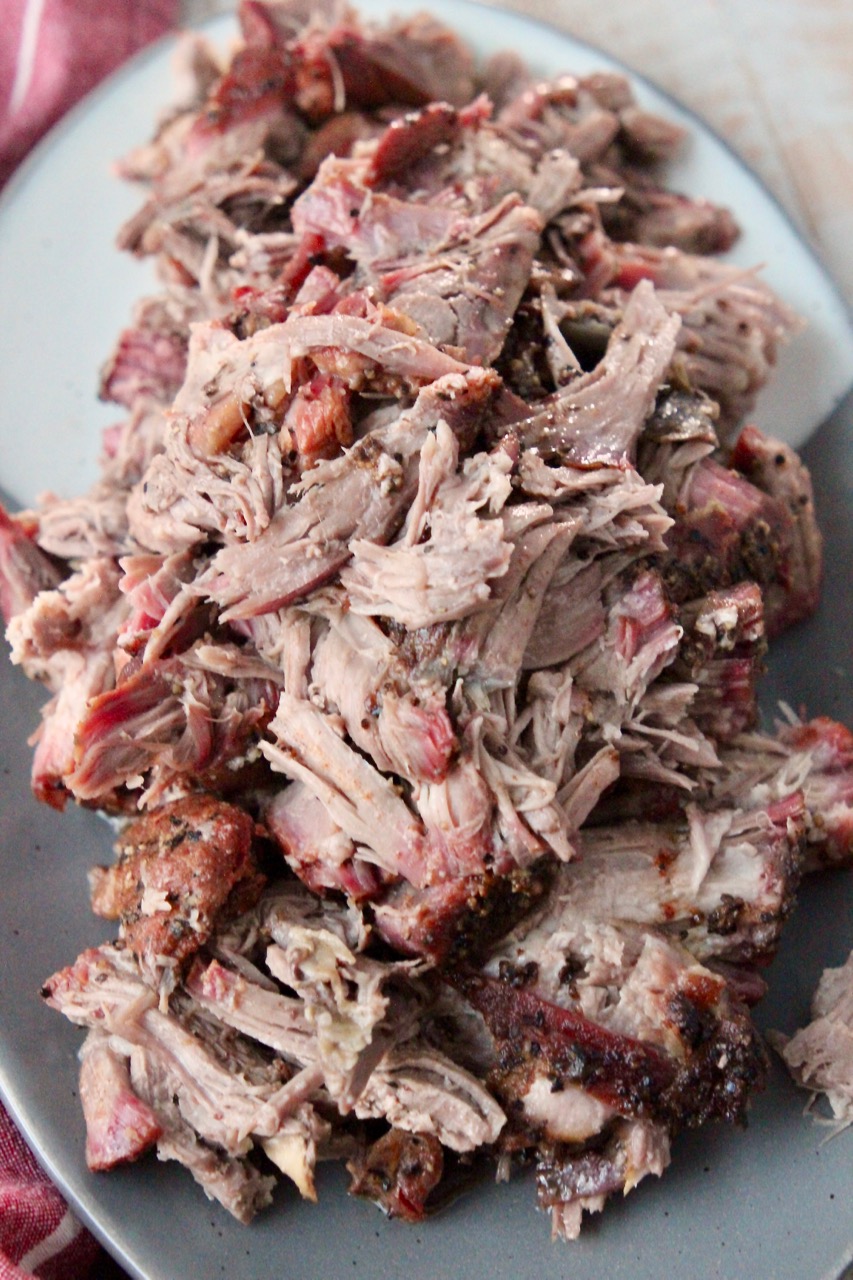
The Texas crutch technique
This is the technique we’re using when we wrap the meat at 160 degrees. It’s a great way to speed up the smoking process on large cuts of meat like a brisket or pork butt. It will also help keep the pork moist and tender. So what is it and what does it do for the meat?
- When a large piece of meat hits a certain temperature it begins to “stall”. (Using pit-master language here y’all!) This basically means that the temperature of the meat has hit a plateau. The pork shoulder is essentially releasing so much liquid that it’s actually cooling down the temperature of the meat.
- The Texas Crutch technique was invented to combat this “stall” time while smoking meats.
- Mark over at Food Fire Friends has a really great and extensive article on The Texas Crutch on his site. If you’re a smoker nerd like me and want to learn even more, I definitely recommend checking it out!
Tips and tricks
- Cook to temperature, not time! The cooking time for a smoked pork butt will vary based on a number of things. For this reason, I always recommend using temperature, not time, to determine when to remove the pork from the smoker. That being said, you can expect around 90 minutes per pound of meat using the Texas Crutch method or 2 hours per pound of meat without the Texas Crutch method.
- Let it rest! After removing the pork shoulder from the smoker, allow it to rest for at least 30 minutes, preferably one hour. This will guarantee that all the juices stay in your meat and don’t leak out.
- To add a little tang to the recipe, feel free to use dijon or dijon mustard instead of olive oil. Simply rub the mustard on the pork butt, then sprinkle on the dry rub.
- Leftover pulled pork will stay good in the refrigerator for up to 5 days in a sealed container. To reheat the leftover pork in the microwave, place it on a plate and cover with a wet paper towel. Microwave for 2 minutes. The wet paper towel will help keep the pork moist. To reheat the pork in the oven, mix the pulled pork with a little apple juice, water or chicken broth to add moisture. Place it in an oven-safe dish and pop it in a 325°F oven for 20-30 minutes.
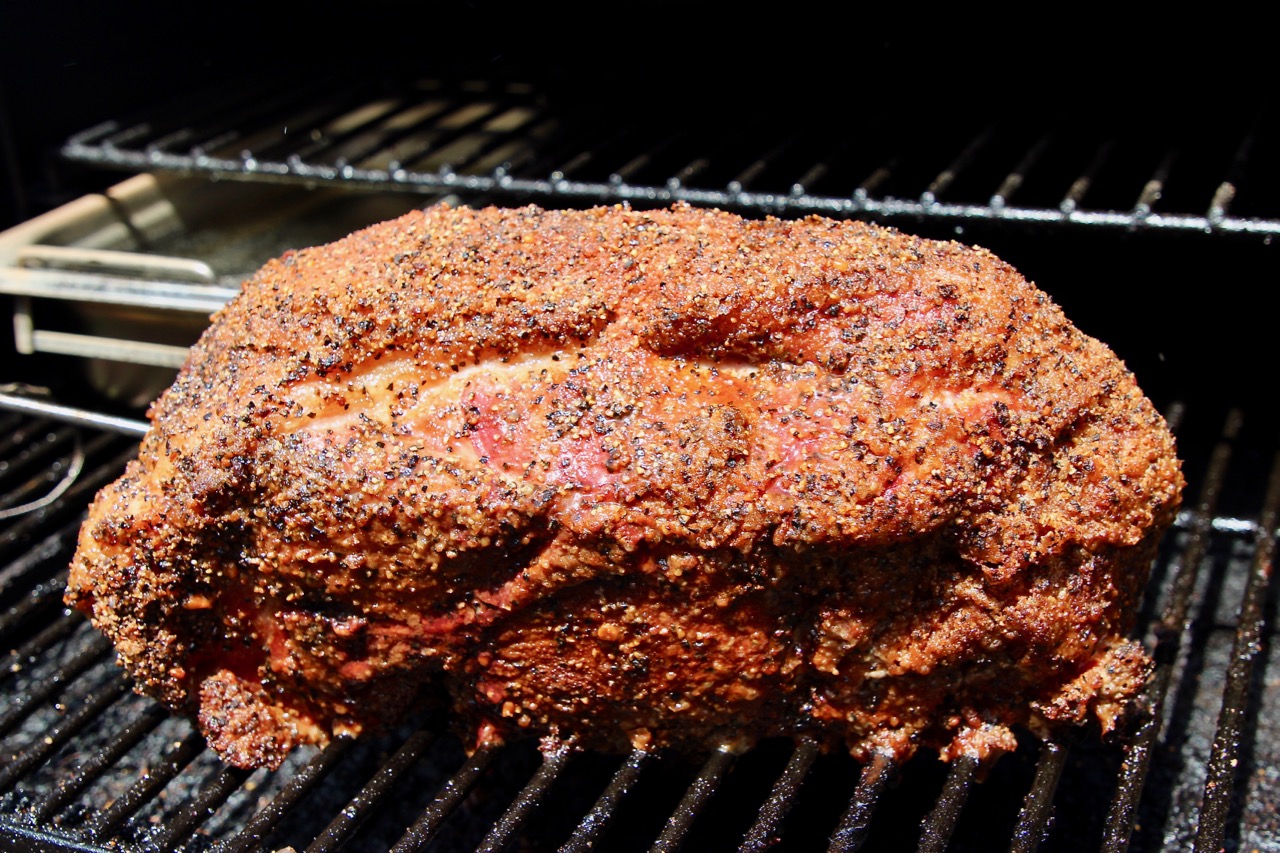
Frequently asked questions
- What is the best temp to smoke pulled pork? The ideal smoking temperature for a pork shoulder is 275°F.
- What size pork butt should I use? This recipe works for anything from a 5-10 pound pork butt. I recommend planning for about a half pound of meat per person. Also note that the pork butt will cook down and weigh less at the end of the cooking process. I usually plan for a 6 pound pork butt to feed around 10-12 people.
- Should you trim the pork butt? I do not recommend trimming fat from the pork butt, as you want the fat to cook down in the pork. That’s what makes it juicy and delicious!
- Should you wrap a pork butt in foil or butcher paper? Butcher paper is best if you want a super crispy, crunchy bark on the outside, as it is more breathable than foil. I like to use this for brisket, but prefer foil for a pork butt. Wrapping the pork in foil captures the meats fat and juices, therefore making it extra moist, which is what you want for pulled pork.
Ways to use it in recipes
We use a fork (or let’s be real, sometimes our fingers!) to dig directly into the pulled pork straight off the plate, no BBQ sauce required! But if you have leftovers, or want to toss it into meals throughout the week, here are a few ways to use it in different recipes.
- Sandwiches or sliders – toss the pulled pork straight on a toasted bun or Hawaiian roll to make awesome sandwiches or sliders. Great for lunches or a party appetizer! You can drizzle some barbecue sauce on the sandwiches, add pickles or coleslaw, or just go all in with a piled-high pulled pork sandwich, no toppings required!
- Pulled Pork Mac and Cheese – if you’ve ever been to the midwest or south, I guarantee that you’ve seen this on a menu! Whenever we have leftover pulled pork, I like to substitute the chicken for pulled pork in this BBQ Chicken Mac and Cheese recipe.
- Pulled Pork Nachos – use the pulled pork to make these Ultimate Pulled Pork Nachos. They’re perfect for game day!
- Tacos – pile the pork up in warm tortillas with slaw or roasted corn salsa. Add a drizzle of this creamy chipotle sauce, for some seriously delicious tacos!
- Stuffed Sweet Potatoes – one of my favorite BBQ joints of all time, Pecan Lodge, in Dallas, Texas makes a dish called the “Hot Mess”. It’s a smoked sweet potato, filled with shredded brisket barbacoa, chipotle cream, shredded cheddar cheese, butter and green onions. I like to recreate this with pulled pork instead of the barbacoa. The flavor combination is unreal! Use the chipotle sauce linked above and feel free to smoke or bake the sweet potatoes.
What to serve with it
Throw an epic BBQ by pairing this smoked pulled pork with any of these delicious side dishes!
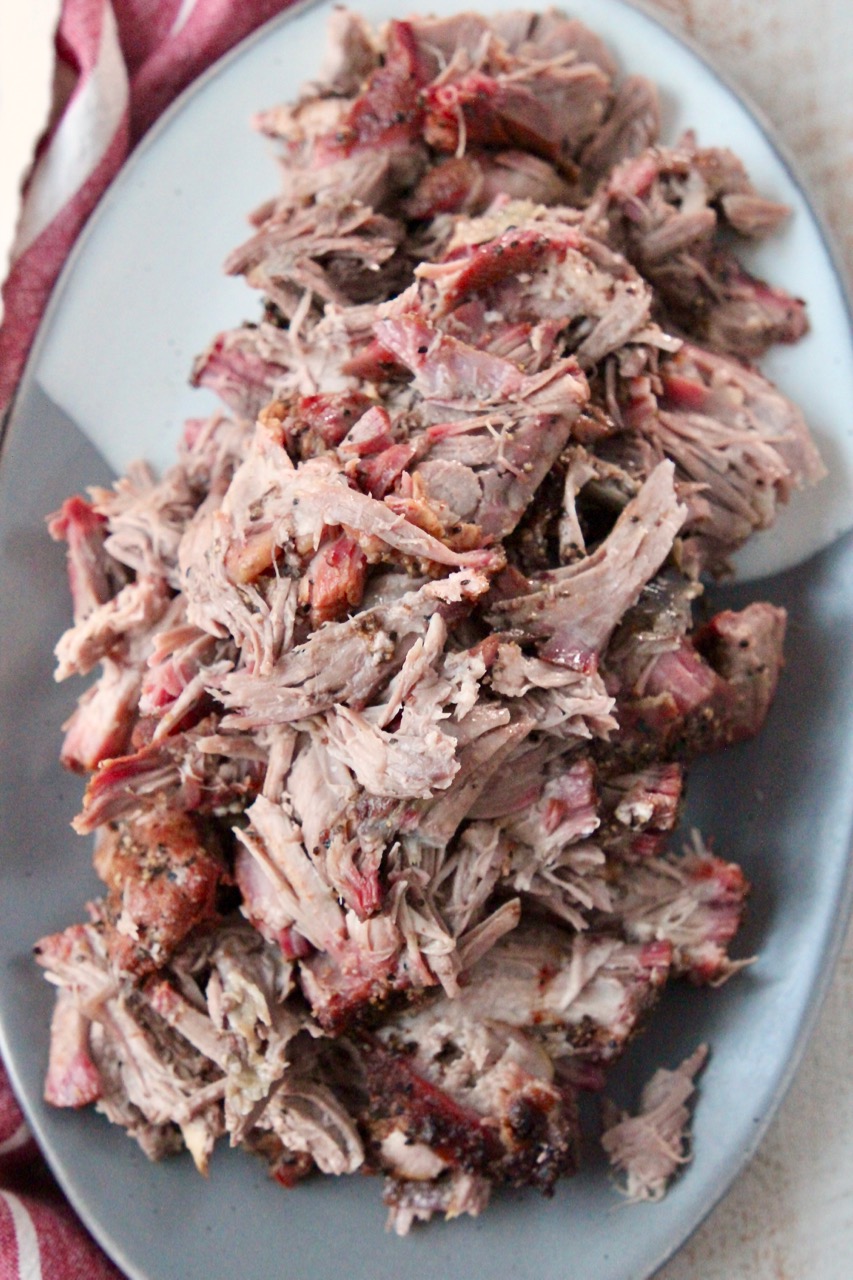
Tools you’ll need
- Smoker – this is the Traeger Pro Series Grill I have at home and used for this recipe.
- Wood or Pellets – I recommend Traeger Apple Pellets for this recipe.
- Water pan – place this pan in the smoker to keep the pork moist throughout the cooking process.
- Spray bottle – for spritzing the meat throughout the cooking process.
- Thermometer – on the Traeger, I use the probes that come with the smoker. If you do not have a smoker with a meat probe, I recommend this thermometer.
- Grill-safe heavy duty foil or food grade butcher paper for wrapping the meat.
- Large cutting board
- Heat resistant gloves or meat claws for shredding the meat.
More recipes for the smoker
Smoked Pulled Pork
Ingredients
Brine
Rub
For smoking
- ½ cup apple juice
Instructions
Brine the pork butt.
- In a small pot on the stove, bring 16 ounces of water to a boil.
- Once the water is boiling, add salt and sugar. Stir for 2-3 minutes, or until the sugar and salt are dissolved into the water.
- Set aside to cool for 10-15 minutes, then pour over the pork butt in a large bowl or bag.
- Add an additional 16 ounces of water, or enough to cover the pork butt.
- Place a piece of plastic wrap over the bowl and place in the refrigerator for 8-10 hours, or overnight.
Rub the pork butt.
- Combine the black pepper, salt, paprika, granulated garlic and granulated onion in a small bowl.
- Rub the pork on all sides with the olive oil.
- Sprinkle the prepared dry rub onto the pork butt and rub it in, making sure to cover the entire outside of the pork with the rub.
Smoke the pork butt.
- Preheat the smoker to 275 degrees Fahrenheit.
- Fill the smoker with applewood or pellets.
- Place a water pan in the smoker filled with water. This will help keep the pork moist throughout the cooking process.
- Place the seasoned pork butt fat side up in the smoker.
- Spritz the outside of the pork every 30 minutes with the apple juice.
- Smoke until the internal temperature reaches 160°F, about 4-5 hours, depending on the size of the pork butt.
- Remove the pork from the smoker when it reaches an internal temperature of 160°F and the fat begins to split on top of the pork.
- Use grill-safe heavy duty foil, or food grade butcher paper to wrap the pork shoulder, then place it back on the smoker until it reaches 203°F.
- Once the internal temperature reaches 203°F, remove the pork from the smoker, keep it wrapped and let it rest for 30-60 minutes.
- Remove the foil or butcher paper from the pork, use your hands with gloves, meat claws or two forks to shred the pork.
Notes
- When picking out a pork shoulder or butt at the grocery store, make sure the fat cap is intact, but there is no skin on the pork. You can purchase a bone-in or boneless pork butt, but I highly recommend buying a bone-in pork butt whenever possible. When shopping for your pork, note that a pork butt may also be called a “boston butt” and a pork shoulder may be called a “picnic shoulder” or “picnic roast”.
- This recipe works for anything from a 5-10 pound pork butt. I recommend planning for about a half pound of meat per person. Also note that the pork butt will cook down and weigh less at the end of the cooking process. I usually plan for a 6 pound pork butt to feed around 10-12 people.
- I recommend apple wood or pellets for this recipe, but you can also use any mild to medium flavored smoke from a sweet tree, such as maple, peach or cherry.
- Cook to temperature, not time! The cooking time for a smoked pork butt will vary based on a number of things. For this reason, I always recommend using temperature, not time, to determine when to remove the pork from the smoker. That being said, you can expect around 90 minutes per pound of meat using the Texas Crutch method or 2 hours per pound of meat without the Texas Crutch method.
- To add a little tang to the recipe, feel free to use yellow or dijon mustard instead of olive oil. Simply rub the mustard on the pork butt, then sprinkle on the dry rub.
- Leftover pulled pork will stay good in the refrigerator for up to 5 days in a sealed container. To reheat the leftover pork in the microwave, place it on a plate, cover with a wet paper towel and microwave for 2 minutes. The wet paper towel will help keep the pork moist. To reheat the pork in the oven, mix the pulled pork with a little apple juice, water or chicken broth to add moisture. Place it in an oven-safe dish and pop it in a 325°F oven for 20-30 minutes.
Nutrition Facts
We are a participant in the Amazon Services LLC Associates Program, an affiliate advertising program designed to provide a means for sites to earn advertising fees by advertising and linking to amazon.com.


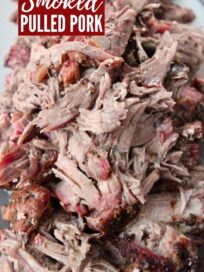
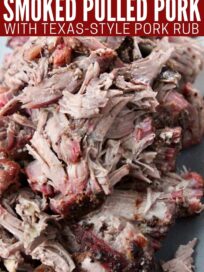
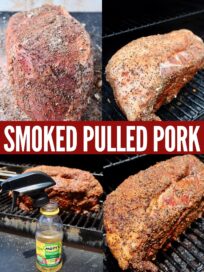

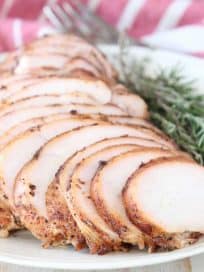
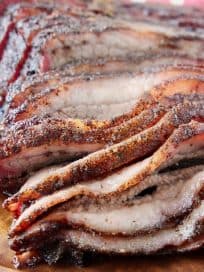
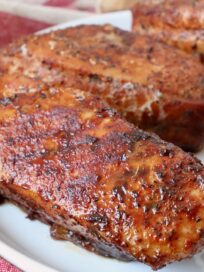
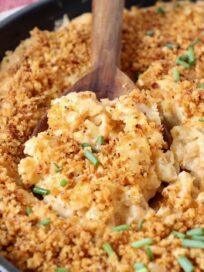
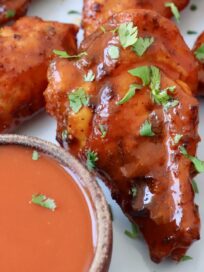
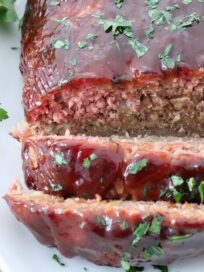
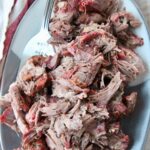

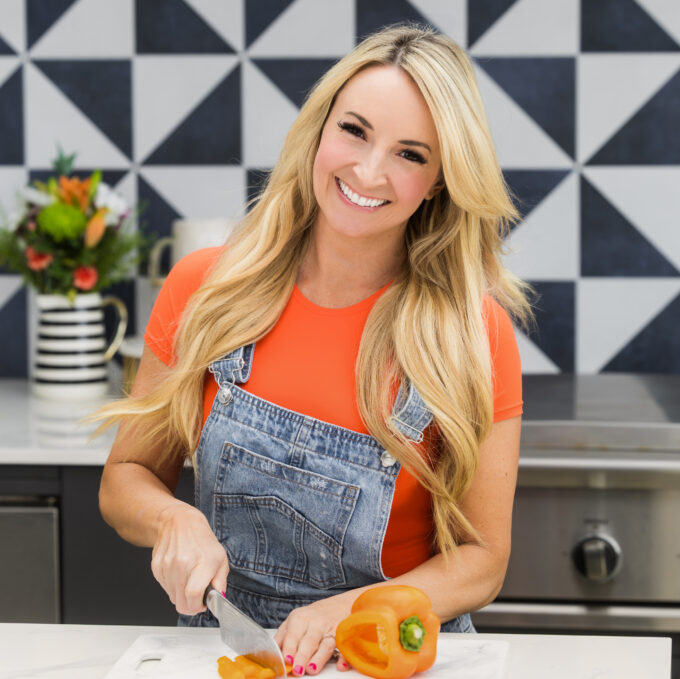
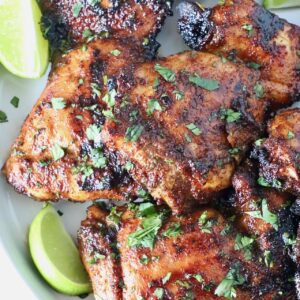
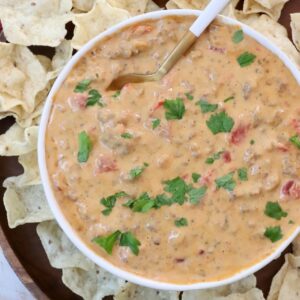




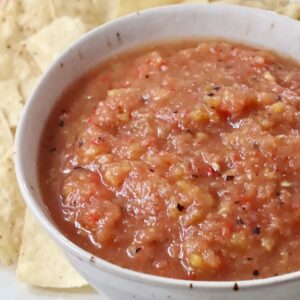
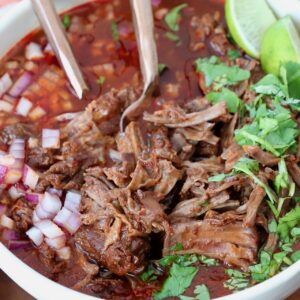

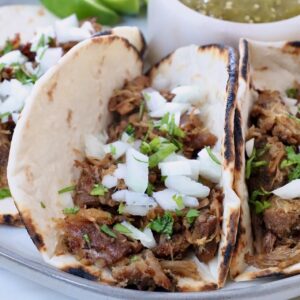

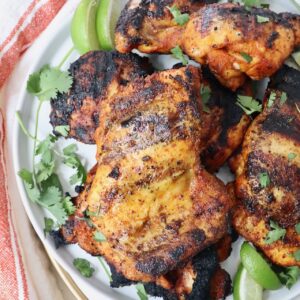
21 Comments on “Smoked Pulled Pork”
This smoked pulled pork recipe is a game-changer! I can’t wait to try those seasoning tips you shared. The step-by-step instructions are super helpful. Thanks for making it so approachable!
This came out really good. I don’t think I’d make it any other way now! I love the smoky flavor in this pulled pork. I had it on brioche buns.
My husband is not a fan of sweet rubs, therefore many recipes are out before they are even tried. This recipe was a God sent. It was super juicy and savory. This will be the recipe we use from here on out.
Love to hear that Taylor, thanks so much for taking the time to leave a review!
Excellent recipe. This was our first attempt at a pork butt in our new smoker. Followed the recipe and the helpful step by step instructions exactly and it turned out perfectly. The butt was around four lbs, was tender, flavorful and cooked in about 5 hours total. The only thing I will do next time is cut down on the salt just a wee bit.
Hi! Can you use pork loin for this recipe and for the water pan where does it go in the smoker? I’m using a Traeger.
Hi Teagan, I haven’t personally tried it, but don’t see why not. Depending on the size of the pork loin, you’ll want to reduce the brine and rub ingredients in half. (A pork loin is usually between 2-4 pounds, and this recipe is for a 6 pound pork shoulder.) You will also probably only need around 3 hours to smoke the pork loin, until it reaches a temperature of 203°F. At this time, you’ll want to let the pork loin rest for 20-30 minutes before shredding it. The water pan can go anywhere in the smoker, it’s purpose is just to provide moisture inside the smoker. Enjoy!
Thank you so much for the help!
I don’t eat much salt so for me, this recipe is super salty. I love how it turned out and next time I will definitely cut down on it. For the rub I had already cut it in half so for the brine I will cut down on it too
Made this turned out really good
Very juicy but way too salty. The method was great… the pork was the juiciest and most tender I have had. I recommend halfing the salt in the brine and dry rub and then it would be perfect!
This is absolutely the best BBQ that I’ve ever had! It didn’t need any sauce and stayed super moist! Definitely will be making it again soon! Thank you so much for sharing!!
Thank you so much for sharing Stefanie! I’m so glad you enjoyed it!
I forgot the oil 🤦♀️🤦♀️🤦♀️ juat wrapped it for second half of cooking.
Hi Danielle, as long as the rub stuck on to the pork, it shouldn’t be a big problem that you forgot the oil. How did it turn out for you?
Hello great recipe! So mines has been cooking for 7 hours and has reached 200 degrees it is a 10 pound butt. Should I remove now? A
Hi Luiza, I recommend removing the pork butt when it reaches 203 degrees Fahrenheit. Hope you enjoyed it!
Can you leave the pork butt in the brine for longer than overnight?
Hi Nicole, you can leave it in the brine for up to 24 hours, but I don’t recommend any longer than that or it will be too salty.
Just learning to use my smoker and this recipe was easy to follow and came out awesome!! Thank you so much for this!
So happy to hear that Heather! Thanks for sharing! I definitely recommend checking out my Smoked Turkey Breast also, it’s so awesome on the smoker!!